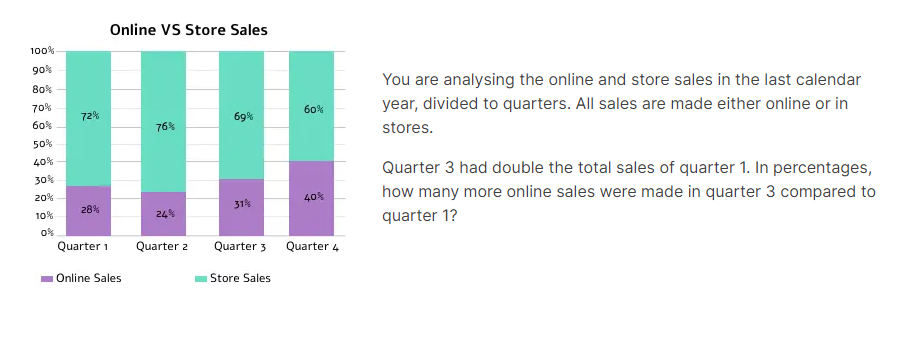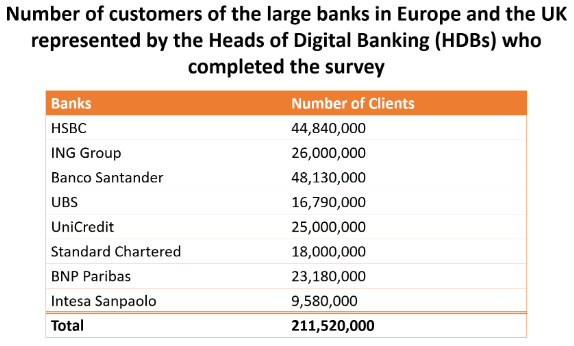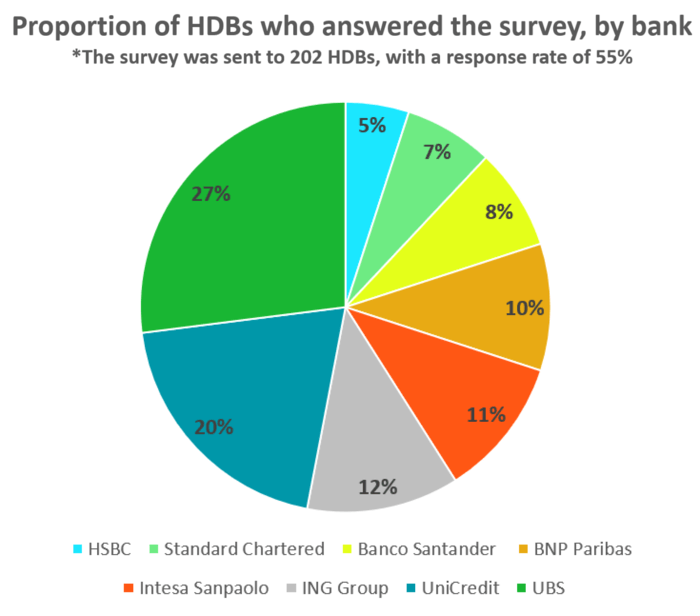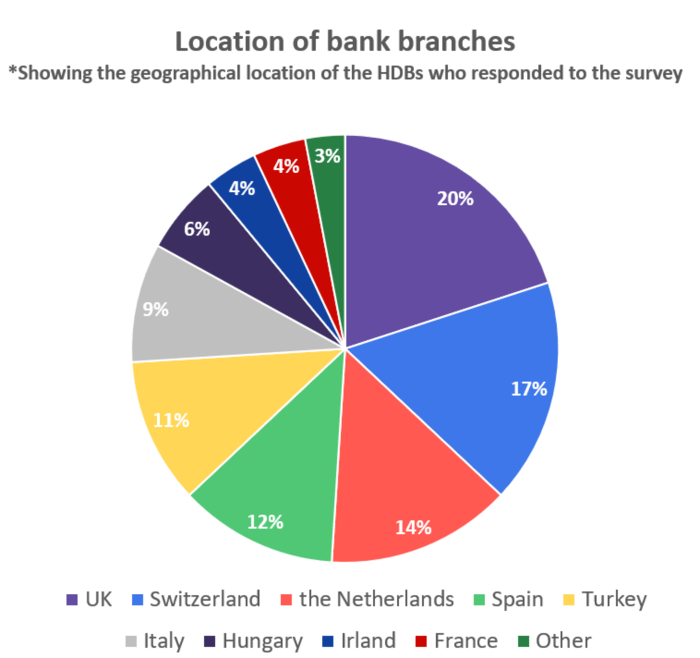 Big 4 Tests Preparation
Big 4 Tests Preparation
Big 4 refers to the four largest multinational accounting and professional services firms – EY, PwC, KPMG, and Deloitte. These firms are highly reputable and play a crucial role in auditing financial statements, providing advisory services, and contributing to various business sectors globally.
Securing a job at these prestigious firms is very difficult. To manage the large volume of applicants, each firm employs aptitude tests to evaluate cognitive abilities and behavioural traits, ensuring the selection of only the most qualified candidates.
For that precise reason, we created a comprehensive, up-to-date PrepPack. It includes:
- PwC assessment simulation, mimicking Arctic Shores’ gamified tasks.
- Deloitte Immersive Online Assessment Simulation, preparing you for all five test sections and additional focused practice for your Delitte Job Simulation.
- EY complete preparation, equipping you with all you need to ace the different EY tests – Numerical Reasoning, One Assessment, Technology is Changing Our World, and Job Simulation.
- KPMG Transforming Small Businesses Assessment Simulation, setting you to all types of test questions – SJTs, Cognitive, and personality.
Applying for a Finance Internship?
Check out our Summer Internship & Spring Week Preparations!
Accurate preparation for all Big 4 accounting firms:
- PwC – 9/10 Arctic Shores Games
- Deloitte –
- Immersive Online Assessment Simulation
- Job Simulation
- EY –
- Job Simulation
- Numerical Reasoning Simulation
- One Assessment Simulation
- Technology is Changing Our World Simulation
- KPMG –
- Transforming Small Businesses Assessment Simulation
- KPMG Online Assessment Study Guide
This product can't be included in the Premium Membership.
What Are the Big 4 Tests?
The Big 4 tests are different aptitude assessments taken as part of the recruitment process of each of the firms – EY, PwC, Deloitte, and KPMG. The Big 4 assessments aim to evaluate your cognitive skills, behavioural tendencies, and work-related preferences to ensure you have the necessary traits for the position you applied for and the organisation’s culture.
EY, Deloitte, and KPMG’s assessments include a series of Behavioural, Cognitive (numerical, verbal, logical), and Personality tests. Different from the rest, is the PwC test, which is a gamified assessment provided by Arctic Shores. Although not a straightforward psychometric test, it evaluates the same competencies as the other Big 4 tests.
See What Our Big-4 Prep Course Looks Like
Big 4 Tests Sample Questions
Numerical Reasoning
Numerical Reasoning tests assess your ability to grasp, analyse, interpret, and apply numerical information.
While the format of the questions can differ between the tests of each organisation, you will usually be presented with numerical information through word problems, tables, charts, and graphs. You will be asked to perform calculations based on this data.
✻ Let’s take a look at an EY numerical reasoning question –

Tip: Before starting your calculations, closely examine the data given. Find the essential facts, connections, and patterns so you can make smart choices and avoid mistakes.
Let's proceed with a verbal reasoning question.
Verbal Reasoning
Verbal Reasoning tests assess your ability to understand, analyse and interpret written information.
There are many types of verbal reasoning questions, such as True/False/Cannot say, explicit multiple-choice, implicit multiple-choice, and meta multiple-choice.
✻ Let’s see an example of a verbal reasoning question from the Deloitte assessment –
Click to see each data source. After reviewing the available resources, scroll down to answer the question.
Based on the data set, which of the following statements is true?
Tip: Avoid making assumptions beyond the text. All the information needed to answer each question is contained in the passages. Eliminate any answer that lacks support from the text.
Next we'll tackle a logical reasoning question.
Logical Reasoning
Logical Reasoning tests assess your ability to analyse data, recognize rules, draw conclusions, and solve problems. This can include abstract reasoning, deductive reasoning, and inductive reasoning.
✻ Let’s check out a Logical Reasoning sample question from our EY One Assessment PrePack –
| Numbers | 123 |
| Letters | ABC |
| Special items | @#%&* |
| Symbols | ¢£$¥ |
| Arrows | <^V |
- Can include up to 9 characters
- Must include at least 1 symbol
- Each special item can be used only once
- Can include up to 2 numbers
- Duplication counts as two different characters: (<<) counts as two arrows.
Which answer does not fit the rules given?
Tip: Pay attention to every rule you are given in the question; every condition can change the answer.
Moving on to situational judgement.
Situational Judgement Test
The Situational Judgement test, known as SJT, is a psychological tool used to evaluate your behavioural and cognitive capabilities in the workplace.
You will be presented with a work-related scenario and a list of possible reactions that you will need to choose, rank, or rate as most or least effective.
✻ Let’s view a KPMG SJT sample question –
Later today, Luci is meeting with Taylor to discuss Shifting Direction's possibilities for using the money raised from their fundraising event. Luci thinks Taylor should invest in online solutions to benefit the technological orientation of her clients. Luci is worried that bringing up Simone's approach (that adapting to new technology might be too hard for the clients) might deter Taylor from contemplating this choice. Luci inquired about your thoughts before the conversation.
What is your view on her question?
Please RANK the following responses from 1-5, with 1 being what you would most likely do and 5 being what you would least likely do:
-
- Tell Luci she must explain every possibility she has in full detail to Taylor. Luci should be honest and open with her client about the potential disadvantages of her own approach and present the opinions of other team members.
- You recommend that Luci share all sides of the situation with Taylor. It is better that she has all the information and decides based on that.
- You agree that the challenges Luci's approach might face are possible to overcome, and understanding the full picture will only confuse Taylor. It is better to share the information at a later time.
- You don't have a clear view on this issue, so you advise Luci to share her hesitations with Simone.
- Suggest you meet with Luci and Simone before the meeting with Taylor. That way, you can agree on an approach that describes what you offer as a team
Tip: Learn the organisation’s values and the traits needed in your position. In SJTs, there aren't definite right or wrong answers – some answers are just better. Pick the response that fits the situation and shows the behavioural tendencies required on the job.
Let's continue with a personality question.
Personality Test
Personality tests assess various aspects of your personality traits, characteristics, and behaviour, as they aim to provide insights into how you think, feel, and behave in different situations.
There are three main types of personality test questions – Most and Least, Likert scale, and Self-describes Statements.
✻ Let’s see an example of a personality test question from the Deloitte assessment –
Please indicate your natural preference for the following statement by choosing a number on the scale

Deloitte's attitude is to adopt a wide perspective that unfolds new opinions that might be different from your own.
They emphasise the advantages and new opportunities that arise from taking in various feedback. Working with that wide perspective in mind can lead to actions that are not exactly aligned with what you had in mind. Some flexibility is necessary to be a good and collaborative team member.
Therefore, the correct range to respond to such a question is 1-3.
Tip: In personality tests, it's important to present your "professional self." This means staying true to yourself while also aligning with the traits and qualities needed for the desired position. Although it might seem straightforward, the significance of this becomes clear as you practice personality tests.
Ace your assessment and outperform your competitors!
With our PrepPack™, you'll access the most precise and current preparation resources, specifically designed for the Big 4 tests. Conquer all your evaluation tests using our provider-style questions, which include situational judgment tests (SJT), interactive simulations, and personality practice tests, all for three months at just £159!
🔍Taking Multiple Finance Tests?
HSBC | UBS | Bain & Co | Macquarie | Morgan Stanley | EIB | Deloitte | Deutsche Bank | Barclays | KPMG | PWC | Lazard | EY | Nomura | BCG | BNP Paribas | Jefferies | Moelis & Co | Job Simulation | Pre-recorded Video Interview | HireVue Interview
Bundles: Summer Internship | Spring Week
Job Simulation
Job simulation is a general term that refers to a series of tests that mimic different aspects of the job you applied for.
These tests can encompass tasks and assignments that represent what you’ll be expected to do on the job.
Among the Big 4, two are using this type of simulation – EY and Deloitte.
• EY Job Simulation – This job simulation consists of a video interview, a Situational Judgment Test, personality profiling, and a virtual job tryout in which you will be asked to respond to an email from one of your colleagues or managers.
💡 Learn more about EY Job Simulation
• Deloitte Job Simulation – This job simulation consists of pre-recorded video interview questions, open-ended written responses, and situational judgment questions.
💡 Learn more about Deloitte Job Simulation
JobTetPrep's Big 4 tests preparation is the exclusive online preparation course designed specifically for EY and Deloitte Job Simulations, with practice questions that mirror the content, format, and desired values and attitudes required in EY and Deloitte!
Big 4 Recruitment Process
Every firm of the Big 4 conducts its own multi-step recruiting process, which usually includes the following stages –
- Online application - You will need to submit an online application via the organisation’s site, typically including your CV, academic transcripts, and a cover letter.
- Online aptitude tests – You will be required to take a series of online aptitude tests, which may include verbal reasoning, numerical reasoning, logical reasoning, SJTs, personality tests, and a job simulation.
- Phone interview – If successful in the online aptitude tests, you will be invited to a phone interview with a recruiter from the firm.
- In-person interview – If successful in the phone interview, you will be invited to an in-person interview with a recruiter, a manager, or a partner from the firm.
- Assessment centre – Some Big 4 firms may also require you to participate in an assessment centre. This day-long event typically includes group exercises, presentations, and case studies.
- Offer – If successful in the entire recruitment process, you will be offered a job.
Big 4 Summer Internship
The Big 4 Summer Internship programmes, offered by Deloitte, EY, KPMG, and PwC, are structured, paid internships designed to provide university students with hands-on experience in professional services.
Typically lasting between 6 to 10 weeks during the summer months, these internships offer participants the opportunity to work on real client projects across various service lines, such as audit, tax, consulting, and advisory.
As an intern, you'll receive mentorship, participate in training sessions, and engage in networking events, all aimed at developing both technical and soft skills. The recruitment process generally involves an online application, aptitude assessments, interviews, and, in some cases, assessment centres. Successful interns may receive offers for graduate positions, providing a pathway to a full-time career within the firm.
Click to see the required assessment test
The PwC Summer Internship is a paid programme lasting approximately 6 to 8 weeks, offering university students hands-on experience in areas such as Audit, Consulting, Tax, and Deals.
As an intern, you will work on real client projects, receive structured training, and gain insight into PwC’s culture.
The recruitment process includes an online application, a series of 10 gamified assessment tests provided by Arctic Shores, a video interview, and an assessment centre.
The Deloitte Summer Internship, or Summer Vacation Scheme, is a paid 4-to-6-week programme designed for penultimate-year university students.
As an intern, you will gain practical experience in business areas such as Audit, Consulting, and Technology, supported by training and mentorship.
The recruitment process includes an online application, followed by Situational Judgement Tests and Cognitive Ability Assessments provided by Cappfinity, a job simulation with video and written tasks, and a final live interview.
The EY Summer Internship is a paid, 4-week programme designed for penultimate-year students to gain real-world experience in areas such as Assurance, Consulting, Tax, and Technology.
As an intern, you will engage in client work, receive structured training, and benefit from mentorship.
The recruitment process includes an online application, followed by a Situational Judgement Test and personality assessment provided by Cappfinity, a job simulation, and a final interview.
The KPMG Summer Internship is a paid programme lasting between 4 to 10 weeks, offering university students hands-on experience in areas such as Audit, Tax, Advisory, and Technology.
As an Intern, you will contribute to real projects, receive structured training, and be supported by experienced mentors.
The recruitment process includes an online application, followed by a Situational Judgement Test, personality test, and cognitive assessments, all provided by Cappfinity, before progressing to interviews.








